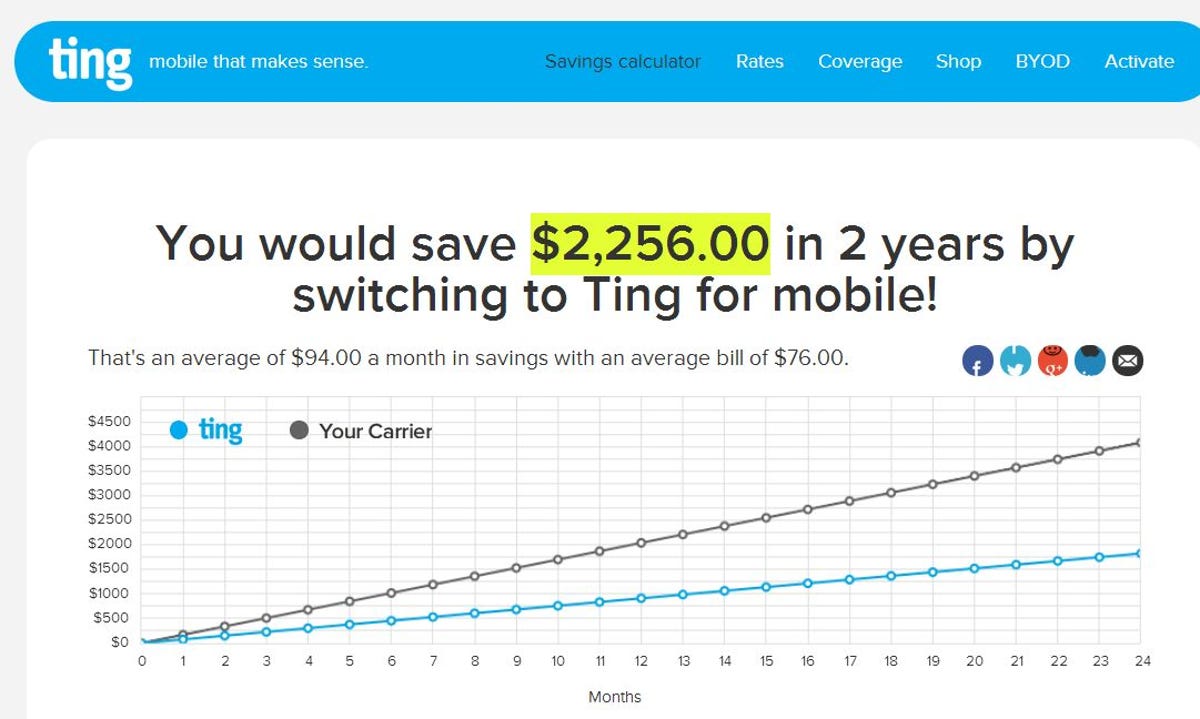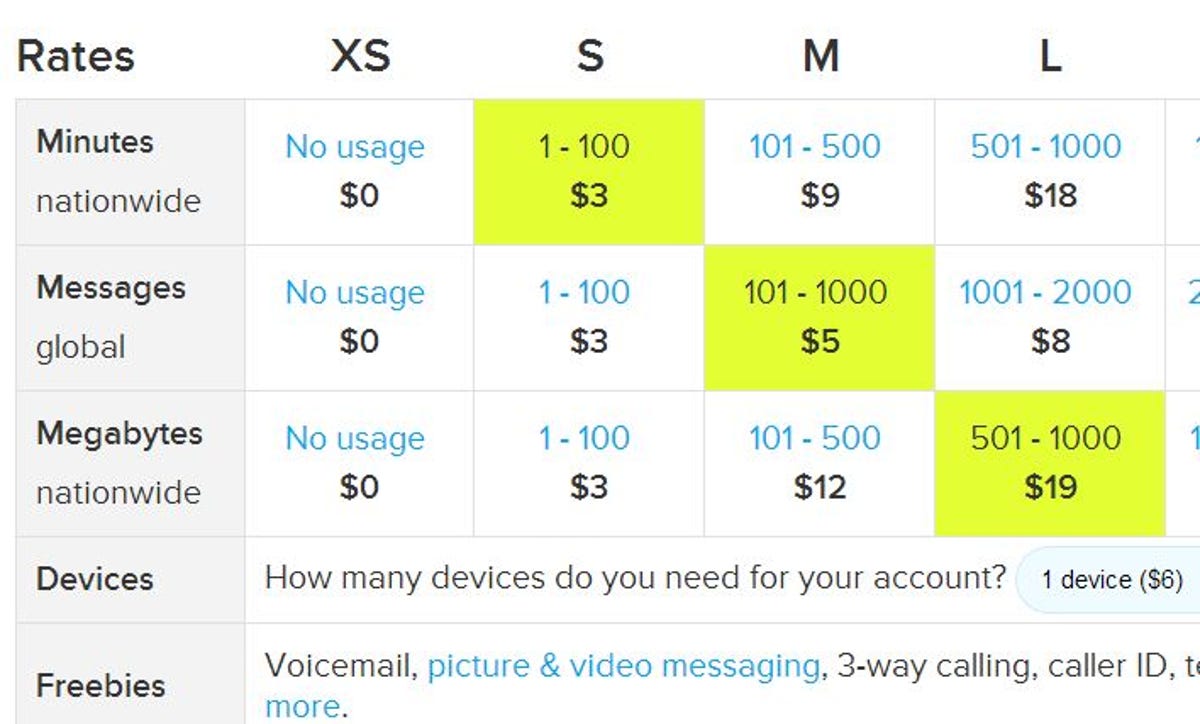
Ting
The smartphone world has its share of disruptors. Over here you’ve got Republic Wireless and TextNow offering cheap, no-contract service powered heavily by Wi-Fi. Over there you’ve got the unlocked OnePlus One smartphone delivering flagship features for half the price of a Galaxy S5.
And then there’s Ting, a two-year-old wireless service provider started by…Tucows? That shareware-hosting company? Yeah, like I’m going to get my cell service from the same place I go to download PDF converters.
Except, hold on a second. Ting’s “disruptive” ways have earned it thousands of loyal fans, and the company has made some interesting moves in recent months that should cause even more users to sit up and take notice. Indeed, every time I write about Republic, Virgin Mobile, or another no-contract carrier, readers invariably chime in to recommend Ting.
Wondering why? Here are five reasons you may want to give the company your wireless business.
1. You pay for only what you use
Ting’s claim to fame has long been its pricing model. Instead of paying a flat rate for “unlimited” everything, you pay only for what you use — a great option for folks who may consume a lot of one thing but very little of another.


Ting
For example, my daughter, like most teens, is constantly texting, but makes almost no voice calls and consumes relatively little data (because she’s mostly connected to Wi-Fi). Ting levies its monthly fees based on three individual “buckets” — one each for voice, data, and texting. Wherever your usage lands within each bucket, that’s what you pay per month.
Think of cable TV: you pay a flat rate for 500 channels even though you may only watch 50 of them. It’s the same with cell carriers, but with Ting, you get an a-la-carte option. Though not every user stands to save big, many users stand to save, period.
2. It’s family-friendly
I know many a household manager who tears his hair out at having to pay for three, four, sometimes even five or more phones every month.
Ting charges $6 per device on your account, with no limits. Then everyone pools their activity into that same bucket system. Although it’s hard to predict where that will land you every month, you can plug usage from previous months (on your current carrier) into Ting’s usage calculator to see what your savings might be.
Again, this is predicated on the idea of bringing an existing phone to Ting. If you’re looking at new hardware for everyone in the family, obviously you’ll have to factor that into the equation — same as you would with subsidized phones from a Big Four carrier.
3. You can easily swap phones from another carrier


Ting
Let’s say you’ve got an AT&T Samsung Galaxy S3 or a Verizon iPhone 5. So much for moving to Ting, right? That S3 runs on GSM networks, and Ting is a Sprint-powered CDMA network. Likewise, Verizon’s phones are typically locked to its own CDMA towers.
Not a problem. Ting recently introduced a swap program that lets you make the move at virtually no cost. What you do is buy the same model phone (except Sprint-compatible) from Glyde, then sell your current handset through Glyde. If you’re not able to sell it for the same price as you bought the replacement, Ting will credit you the difference.
Sure, this will take a little time and effort, but in the end it should be a fairly transparent move — the only difference being that Ting is now your service provider.
4. It’s hacker-friendly
One frustrating thing about carriers like Republic Wireless is that you can’t bring your own device. Ting not only accommodates most Sprint-compatible handsets, but also “quietly encourages” (a PR rep’s words) any bit of hacking that goes with it.
So, for example, a recent Reddit thread revealed that some Verizon iPhone 5 units can make the move to Ting. (It all depends on the ESN, which you can check easily using Ting’s tool.) Another Reddit user shared the option of unlocking a Boost Mobile Moto G — temporarily on sale at Target for just $59.99 — and bringing it to Ting.
The company is like a cellular Statue of Liberty: “Give us your tired (of contracts), your poor (from paying high monthly rates), your huddled masses yearning to switch carriers.”
5. You can give back
Like Solavei, Ting has a referral program (accessible via your account dashboard) that nets you $50 in credit for the first friend who joins and $25 per friend after that. (Needless to say, scoring just one referral per month could potentially cover your entire bill.)
However, if you don’t want friends and/or family members to feel like you’re just looking out for number one, Ting now offers the option of donating your referral credit to charity. I like that, much the same way I like Giv Mobile’s monthly contributions pared from your bill.
So what’s the catch?
Are there any reasons not to hook up with Ting? I can think of only one: coverage. In my neck of metro Detroit, Sprint service is mediocre at best. Inside my house, call quality varies between weak and mediocre (with occasional drops), and data moves at a snail’s pace.
Ironically, I have the same issue with Republic Wireless (another Sprint MVNO), but the default to Wi-Fi calling effectively solves that problem. It also allows me to make calls when I travel outside the country, an option not natively available on CDMA phones.
In any case, I had the chance to test drive an iPhone 5 running on Ting’s service, and using it was no different than using an iPhone 5 on any other carrier. (Interestingly, you can buy a Ting-ready iPhone 5 from Glyde for about $250.) Unfortunately, for the moment there’s no support for the iPhone 5C or 5S, though a Ting rep said it’s in the works.
I’m not saying Ting is the best carrier out there or even the cheapest. It’s simply one you shouldn’t overlook when shopping for cell service. There are several benefits you won’t find elsewhere, not the least of which is the chance to pay lower rates.
If you’ve tried Ting yourself, hit the comments and share what you liked or didn’t like.



